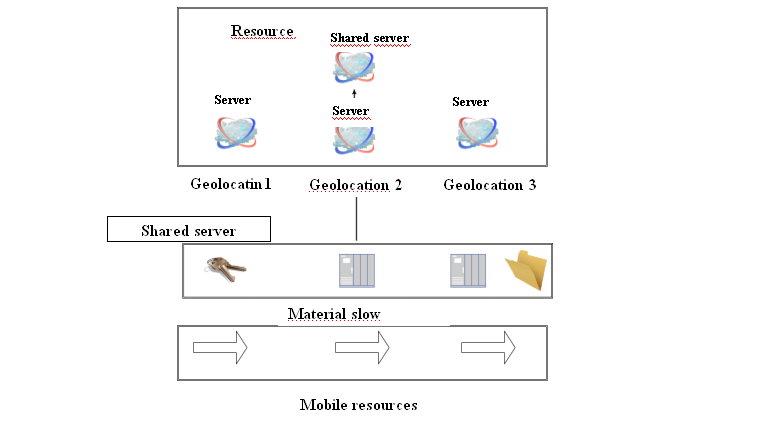
2nd year graduate student,
Kazakh-German University, Almaty, Kazakhstan
Specialty "Resource-saving production logistics",
Scientific adviser - Kegenbekov Zhandos Kadyrkhanovich
Candidate of Technical Sciences, Associate Professor, Dean of the Faculty of Engineering and Information Technologies of the Kazakh-German University
Annotation. This article examines virtual logistics centers as the most efficient way to use resources. It also examines the impact of information technology on virtual logistics centers and presents the result to date.
Key words: virtual logistic centers, information flow, information technology, cloud computing.
Nowadays, the systematization and simplification of many processes through information technology is becoming more and more popular. Corporations and large organizations prefer virtual logistics, which is developing rapidly and provides an opportunity to save many resources such as time, speed of tasks, etc.
A virtual logistics center gives you the opportunity to work remotely and complete tasks and teams, and this provides a chance to have employees around the world, which in logistics can play into the hands of an employer. Using the example of Uber, Amazon, Alibaba, they base all their business models by storing them in cloud platforms, all calculations are carried out on cloud computing, IT networks, etc. [1, p. 26] ICT has a fairly wide range of opportunities to increase competitiveness, as it establishes close partnerships between customers, suppliers and business partners through the modernization of management processes.
The information flow itself runs parallel to material goods in the production system. Integration of the information flow makes the virtual logistics system augmented, productive and overcomes all barriers in flow processes [3, p. fifteen]. It is possible to highlight some of the difficulties faced by the integration of information flow into a virtual logistics system: - system integration; - stepwise implementation of the system functionality; - access to all databases of the organization; -methods of data visualization to support the perception of data in the analysis.
When creating the virtual logistics centers themselves, the following obstacles must has considered: - Competitors in the field of related services may not take such a risk - bundling and providing complex services; - skeptical attitude to the joint effect, which involves the development of logistics activities in partnership; - the impossibility of connecting logistic information systems [7, p. 87].

Figure 1. Hierarchical organization of resources in an integrated system
The rationale for creating a virtual logistics center is efficiently manage the vital capacity that is available. Available capacities are those resources that, in terms of their functional and technical characteristics, parameters, readiness for operation, has integrated into a virtual logistics system. Integrated logistics services require the use of resources such as buildings, machinery, equipment, labor. The individual or group use of the available capacities already depends on the client's requirements and the way of satisfaction.
Mobile resources include cars, human resources, and financial capital. These resources has made available without any restrictions in accordance with the planned logistics services. Stable resources include roads, warehouses, transfer points, stations, ports, airports, etc. When designing a multi-purpose logistics center concept, a hierarchical architecture has used, as in Figure 1.
The following sorting of resources is used:
The connection between geo-locations and the characteristics of logistics services through stable resources with division into various decentralized locations will lead to an increase in traffic volumes. Moreover, the decentralization of the virtual logistics center will have a positive effect on reducing the capacity of transport routes by optimizing transport chains.
In conclusion, we can conclude that many companies, guided by many positive aspects, create virtual logistics centers in partnership with their competitors, get a solution to many problems that arise with simple logistics centers. The correct distribution of resources takes place with the correct operation of decentralized centers. However, taking into account all the factors, do not forget that remoteness and virtuality introduce their own adjustments. For example, the main resource of every company is its human resource.
Bibliographic list
1. Minakova I. et al. Innovations in inventory management of industrial enterprises // Innovative economy: prospects for development and improvement. - 2017. - No. 8 (26).
2. Kizim AA, Isaulova SS Virtual transport and logistics system. Logistic centers as points of virtual economic analysis // Finance and Credit. - 2004. - No. 1 (139).
3. Kizim AA, Kozenko VV Virtual logistics: problems and prospects // Economics of sustainable development. - 2013. - No. fourteen.
4. Khalyn VG Virtualization of information and logistics infrastructure of regional logistics distribution centers (for example, SKLP LLC) // Bulletin of the Rostov State University of Economics (RINH). - 2014. - No. 3 (47).
5. Krivdenko AN, Cherpakova EV APPLICATION OF VIRTUAL TECHNOLOGIES IN TRANSPORTATION AND LOGISTICS SYSTEMS // Innovations in science and practice. - 2019 .-- S. 214-218.
6. Matveeva DA VIRTUAL ORGANIZATION IN LOGISTICS // Actual problems of aviation and cosmonautics. - 2018. - T. 3. - No. 4 (14).
7. Putkina LV Development of an innovative strategy for the activity of a commercial enterprise in the virtual market // Modern problems of science and education. - 2013. - No. 2. - S. 365-365.
8. Davydov SV Virtual logistics centers in regional transport and logistics systems // Transport Bulletin. - 2003. - No. 6. - S. 34-38.